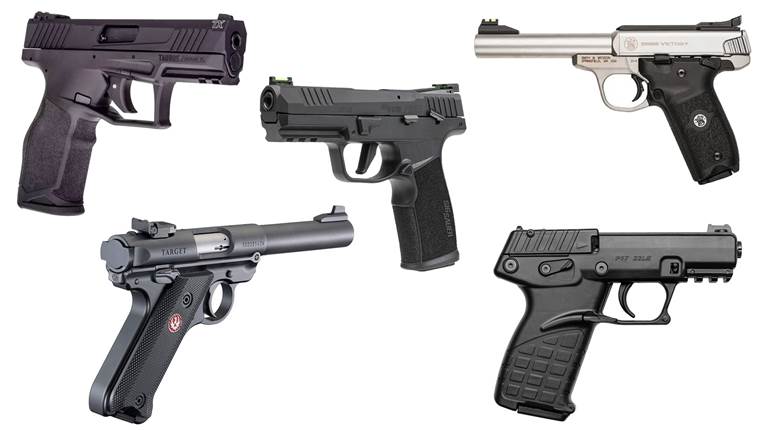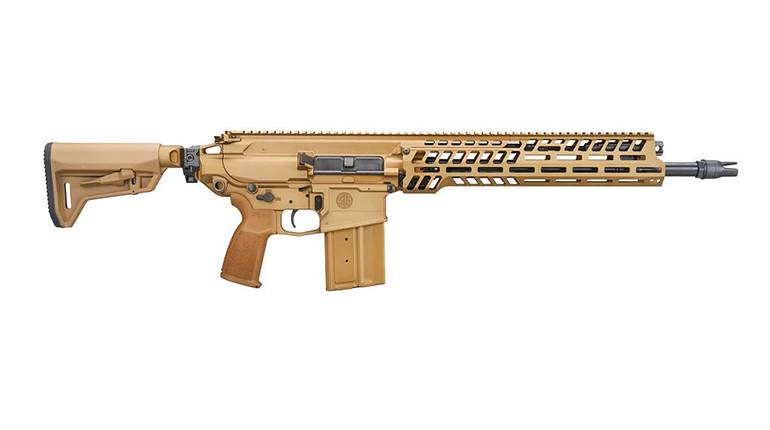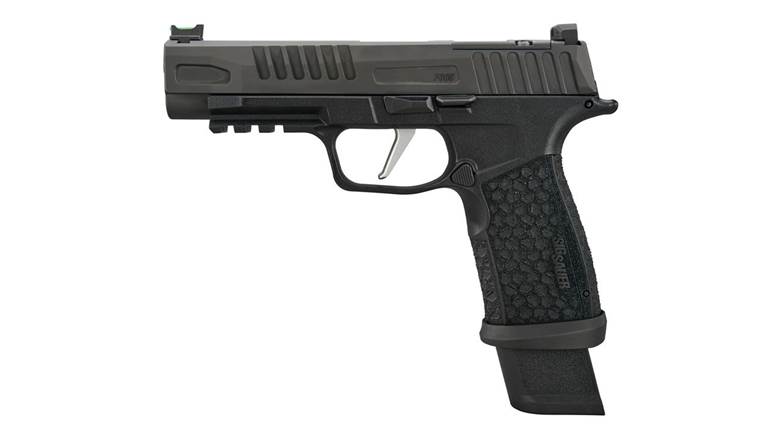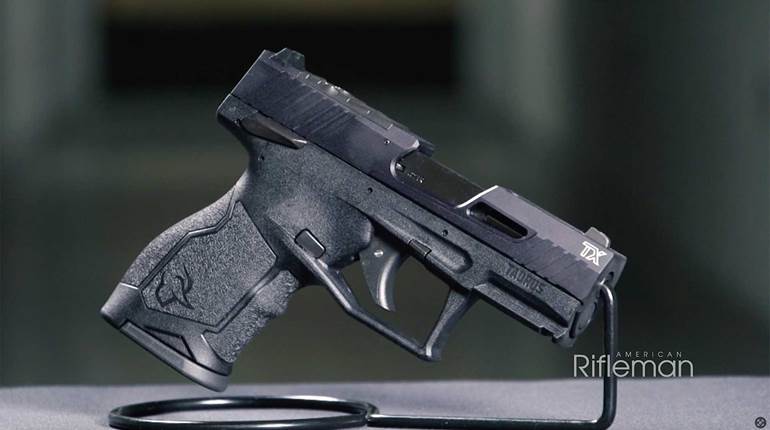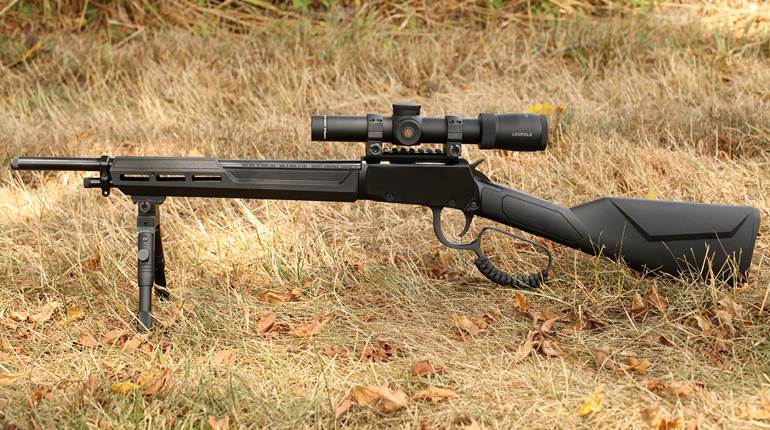
This closing only affects a couple handgun models, some rifles and about 130 employees in northern Germany’s Schleswig-Holstein. Although Lorenz Sauer dates back to 1751 in Suhl, Thuringia, and it became J.P. Sauer & Son in 1840, the move to the Eckernförde location didn’t come until 1951—not long after the Iron Curtain went up across Europe. Walther moved out of the same region when the reality of Communist oppression became clear.
According to a statement from SIG Sauer: “L&O Holding group has announced that it is closing its SIG SAUER, GmbH (Germany) division in Eckernförde, Germany. L&O Holding owns and operates numerous business units in the defense and hunting market including SIG SAUER, GmbH (Germany), SIG SAUER, Inc. (U.S.A.), and German Sports Group, GmbH (GSG), among others.”
In 2000, Schweizerische Industrie Gesellschaft sold a number of companies to L&O Holding, which included Blaser, J.P. Sauer & Sohn, Mauser, SIG Sauer GmbH and SIGARMs (later SIG Sauer, Inc.).

To be honest, the fact that Eckernförde plant has been an operation for as long as it has is a bit of surprise to me. That’s because they almost shut it down before—even previously halting importation of all but a few models to the United States and then announcing no handguns would be made there at all.
Then it was decided to make handguns again because management wanted to continue to fulfill or pursue German law-enforcement contracts that stipulated that the guns be made in Germany. But the contracts were limited and few and far between, and SIG Sauer wasn’t winning them all.
Berlin police selected the Heckler & Koch SFP9 TR as its official sidearm in 2017. (We know it better as the H&K VP9). On the military side, he Bundeswehr kicked SIG Sauer out of its latest rifle tender due to the inclusion of “U.S. technology.”
Restrictive legislation on civilian shooters and the onerous process for acquiring a handgun in Germany are said to have reduced demand even further. You can throw COVID-19 in there while you're at it.
Early this year, Legacy Sports Int’l announced it would become the importer for the SIG Sauer P210 Legend and the P226X Line—which should have been a clue that something odd was going on between Germany and SIG Sauer’s U.S.-based operations—more on that later. The guns are off the Legacy Sports website, and it’s not clear if any were actually imported.
Virtually all manufacturing of SIG Sauer handguns had long shifted to the United States—with the above-noted exceptions. “SIG Sauer, Inc. operations in the U.S. will continue business as usual,” according to the company statement.

“The U.S. based division, headquartered in Newington, New Hampshire, has over 2,300 employees throughout 9 facilities in New Hampshire, Arkansas and Oregon where the company designs and manufactures firearms, ammunition, optics, suppressors and air guns. Further, in New Hampshire, the company operates one of the most advanced training facilities in the world, SIG Sauer Academy.”
It used to be that all SIG Sauer pistols came from Eckernförde, Germany. The partnership between SIG in Switzerland and J.P. Sauer & Son began with the P220 double-action pistol, which was initially imported into United States as, of all things, the Browning BDA in .45 ACP.
The German maker was bought by SIG so it could avoid Switzerland’s onerous export laws and, probably, hard as it is to believe, the then-lower price of German labor. This partnership eventually led to the 9 mm SIG Sauer P226, which became the basis of the P228 and P229—and the U.S M11.

These guns were used by everyone from U.S. Navy SEALs to many of the nation’s premier law-enforcement organizations—plus legions of civilian gun owners who became fans of the P-series guns.
Initially just an importer, one with offices above NRA Publications in, of all places, Herndon Va., SIGARMS begin manufacturing guns in the United States. These were initially the military guns, and I recall seeing a single, lonely CNC machine in New Hampshire decades ago making slides.
SIG Sauer got a new sheriff in the person of CEO Ron Cohen, who turned what was a minor machining operation and mostly importation into one of the largest firearms manufacturers in the world. Add in electro-optics, suppressors and ammunition, and SIG Sauer, Inc., is a “systems” maker that pretty much does it all.
SIG Sauer has had incredible success in recent years, landing the U.S. M17 and M18 pistol contract as well as the ongoing Next Generation Weapons (NSGW) light machine gun in 6.8 mm and the MG 338 machine gun in .338 Norma Mag. being used by USSOCOM. But the plant in Eckernförde had nothing to do with those successes.
In recent years, German governmental authorities and judges—plus activist NGOs—have made it virtually impossible for gunmakers to do any international business at all—at least outside NATO, and it’s not just the government. The German press is extremely anti-gun and continually hounds those few remaining makers of handguns (or any guns, for that matter) in Germany, let alone the nasty things they say about lawful gun owners.

How’s this for a headline “Heckler & Koch’s Illegal Arms Deal with Mexico”? It reads, “Five H&K employees conspired in a sale of G36 assault rifles to Mexico wait their sentences in Stuttgart. The trial has offered insights into the weakness of Germany’s arms export control laws."
It goes on to say that "the five defendants are charged with violations of Germany’s export laws and war weapons export control laws. But their responsibility has been mitigated by evidence that emerge during the trial that showed irregularities and how the export certificates were drawn up by government authorities who apparently misinterpreted the law.“
The story finishes by saying that no government officials were charged. That said, H&K officials were looking at jail time and fines. Note that H&K was not selling guns to the cartels but to the Mexican government.
SIG Sauer didn’t escape this attention, either. Guns—P2022s—sent from SIG Sauer GmbH to SIG Sauer in the United States were purchased by the U.S. government and then sent to Columbia.
This was against German export law, and it resulted in SIG Sauer officials jailed for a time and eventually heavily fined. They did nothing wrong in the United States, but the fact that the guns didn’t have an end-user certificate for Columbia resulted in files being charged by German NGOs with the prosecutor’s office in Kiel, Germany.
Even Carl Walther GmbH has been hammered by groups such as the Outcry Campaign, which is dedicated to eliminating the arms trade altogether, as described in a 2014 article on DW.com, because Walther pistols sold legally to some provinces of Columbia were allegedly found in provinces that were prohibited by German expert law from receiving guns.
It's no wonder German gunmakers are setting up manufacturing facilities in the United States.
“SIG Sauer, Inc. markets and distributes its U.S.-made products in 88 countries. The SIG Sauer, Inc. International Sales Team, based in Europe, will expand its responsibilities to include the German market. German Sports Group (GSG), the current commercial distributor in Germany for SIG Sauer, Inc. for optics, ammunition and air guns will expand its role to include commercial firearm sales in Germany.”

Blaser GmbH makes the single-shot K95 and R8 straight-pull rifles, as well as the F3 and F16 over-under shotguns, at a modern and impressive facility in Isny im Allgäu, Germany, and they are imported by Blaser USA, along with Mauser, J.P. Sauer and John Rigby rifles—plus some really fancy backpacks.
The fate of the guns previously made at Eckernförde is unknown at this time, but an American-made version of the P210 already exists and, someday, it may be that Sauer rifle manufacturing shifts to another plant. I would speculate Isny for the latter, but it is just that on my part.
Reports indicate the SIG Sauer GmbH plant will be shuttered by the end of 2020, ending a legacy of quality firearms manufacture by SIG Sauer in Germany that spanned nearly a half a century.













